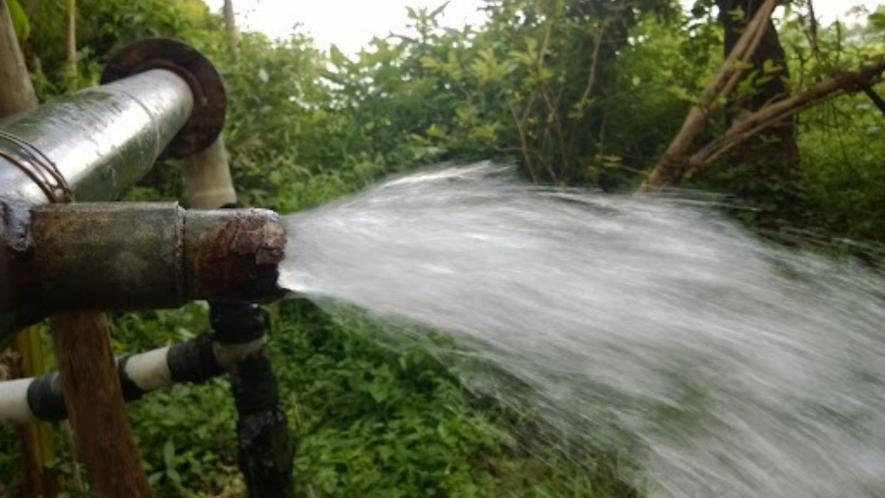INDIA
Haryana: Alarming Levels of Arsenic and Fluoride Contamination Found in Haryana's Groundwater

Image Courtesy: Wikimedia Commons
New Delhi: In a shocking revelation, a groundwater sample from Chhara village in Bahadurgarh (Jhajjar) has been reported with an arsenic level of 0.299 mg/l, nearly 30 times the permissible limit.
According to a report published in The Tribune, the sample, drawn from a hand pump, highlights the severity of water contamination issues in the region. Similarly, in Sui, Bawani Khera (Bhiwani), a dug well recorded an arsenic level of 0.2 mg/l, surpassing the permissible limit by 20 times. Meanwhile, Bohal village witnessed a water sample from a dug well with arsenic levels exceeding 11 times the permissible limit.
The World Health Organization (WHO) identifies arsenic as a toxic element and a significant health hazard. Long-term exposure to elevated arsenic levels in drinking water has been linked to cancer, skin lesions, cardiovascular diseases, and diabetes.
Disturbingly, groundwater in 51 habitations across 18 districts in Haryana is now confirmed to be contaminated with arsenic. Notably, nine habitations in Karnal alone—Salwan, Nanhera, Kalra Jagir, Ghari Khajur, Nalvi Khurd, Ramba, Nalvi Kalan, Chorkarsa, and Kurlan—are affected. Additionally, districts like Sirsa, Bhiwani, Rohtak, and Sonepat are grappling with the alarming issue, with six contaminated locations in Sirsa and Bhiwani and five each in Rohtak and Sonepat.
The Central Ground Water Board (CGWB) recently shared data on arsenic and fluoride contamination with the Haryana Water Resources (Conservation, Regulation, and Management) Authority (HWRA).
But arsenic contamination is not the only concern; 136 locations across 20 districts in Haryana are grappling with fluoride-contaminated groundwater. Loharwala village in Bhiwani, for instance, recorded fluoride levels at a tubewell source as high as 22 mg/l, almost 15 times the permissible value. The CGWB deems water with fluoride concentrations exceeding 1.5 mg/l unsuitable for drinking. High fluoride concentrations have been associated with enamel staining, while levels between 5 and 10 mg/l lead to pathological changes such as back stiffness and difficulty performing natural movements.
Atawala village in Panipat faces a fluoride level of 16 mg/l, approximately 11 times the permissible value. Uchana in Jind is not far behind, recording 12 mg/l, eight times the permissible limit.
The National Green Tribunal, recognising the severity of the situation, has initiated proceedings related to arsenic and fluoride contamination of groundwater in several states. On December 20, 2023, the tribunal issued a notice to Haryana through the Chief Secretary, demanding a response.
In response to the crisis, Keshni Anand Arora, the Haryana Water Resources Authority chairperson, has announced a meeting with the Chief Minister on January 18. Arora emphasises the importance of monitoring drinking water quality, urging the Public Health Engineering Department, Urban Local Bodies Department, and the Haryana Pollution Control Board to collect data on arsenic and fluoride contamination. “Our agenda is that the authorities such as the Public Health Engineering Department, Urban Local Bodies Department and the Haryana Pollution Control Board should keep monitoring the quality of drinking water. Data on arsenic and fluoride contamination will be collected,” Arora told The Tribune.
The situation poses a severe threat to public health, and urgent measures are required to address the water contamination crisis in Haryana.
No comments:
Post a Comment